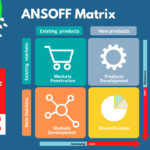Mastering Market Segmentation: A Comprehensive Guide to Effective Targeting and Growth

- What is Market Segmentation?
- Why is Market Segmentation Important?
- Segmentation, Targeting, and Positioning (STP) Marketing
- Steps for Successful Market Segmentation
- Marketing Strategies for Segmentation
- Benefits of Market Segmentation
- Challenges of Market Segmentation
- Implementing Market Segmentation
Market segmentation is a crucial decision-making tool for marketing managers, allowing them to select a specific target market for their product.
By understanding the process of market segmentation and implementing it correctly, businesses can unlock the power of targeting their audience more accurately, leading to increased success and growth.
Join us as we delve into the world of market segmentation, discussing its benefits, challenges, and strategies for successful implementation.
So, let's dive in and discover how market segmentation can revolutionize your business!
What is Market Segmentation?
When it comes to marketing, recognizing and taking advantage of the distinct sets of consumers is essential for any business attempting to stand out in an overcrowded market.
This process, known as market segmentation, involves breaking down a large population into smaller, more manageable groups based on similar traits.
By utilizing market segmentation, firms can pinpoint precise customer segments that offer the greatest potential for success.
An effective way to utilize market segmentation is with STP marketing, which places the customer at the center of the business's outreach efforts.
This approach enables companies to craft their strategies to meet the individual needs, preferences, and behaviors of specific customer segments.
The Handbook of Market Segmentation, 3rd Edition: Strategic Target Marketing for Business and Technology Firms provides the tools and knowledge necessary to implement market segmentation in a domestic or global setting.
As a key element of the marketing planning process, market segmentation is a critical discipline that can lead to substantial growth and success for any organization.
Why is Market Segmentation Important?
Having an effective approach to targeting and growing a business is essential.
By breaking up the market into segments, it is possible to identify specific consumer groups that share similar attributes and desires.
This enables the development of tailored strategies and messages that are more likely to reach and keep customers.
Knowing the unique wants and habits of different segments makes it possible to allocate resources more efficiently and focus efforts on the areas most likely to generate the strongest returns.
In this way, segmentation helps businesses maximize their growth potential.
Using segmentation strategies can also give a company an edge over the competition.
By discovering and targeting small sections of the market that other businesses may not have noticed, a business can position itself as the go-to solution for those particular needs.
This distinction can set them apart, creating a sense of value and connection with their target customers.
Moreover, segmentation helps to gain insight into the needs and desires of customers, allowing the creation of products and services that meet their expectations.
This customer-focused approach will result in higher satisfaction and loyalty, leading to enhanced success for the business.
Moreover, segmentation is a great way to optimize the marketing budget.
By concentrating on certain segments, resources can be put towards the most promising prospects and wasteful spending can be avoided.
This targeted approach not only saves money but also increases the effectiveness of marketing campaigns.
With personalized messages and offers directed to each segment, it is more likely to catch their attention and motivate them to take action.
This kind of tailored communication creates stronger relationships with customers, increasing the chances of turning leads into sales.
In addition, segmentation is a key element of market research and analysis.
By dividing the market into segments, data can be collected on the specific needs, preferences, and behaviors of each segment. This data can be used to develop targeted marketing strategies and make informed decisions.
Segmentation also allows for the separate tracking of the performance of each segment, exposing trends, assessing the success of marketing efforts, and making adjustments as necessary.
All in all, segmentation provides invaluable insights and guidance that can help businesses make data-driven decisions and reach their goals.
Segmentation, Targeting, and Positioning (STP) Marketing
Effectively crafting a successful marketing strategy requires a consumer-centric approach.
Utilizing Segmentation, Targeting, and Positioning (STP) Marketing is the key to mastering the art of reaching a specific market demographic.
This technique breaks down the market into miniaturized segments based on shared characteristics such as demographics, behavior, and needs.
By understanding the unique traits of each segment, businesses can hone in on which ones offer the most lucrative opportunities, aligning their capabilities and objectives with the chosen target.
Positioning is then utilized to strategically position a product or service in the minds of the selected demographic.
This involves creating a unique value proposition that differentiates the business from its competitors while resonating with the needs of the target market.
By implementing STP marketing, companies can gain a competitive edge and maximize their potential in the market by catering to the demands of their target segments.
Steps for Successful Market Segmentation
To ensure accurate targeting and growth, an essential process is crafting successful steps for market division.
Research is the initial step to amass pertinent information and insights related to the desired audience.
This includes examining demographic particulars, psychological characteristics, and inclinations.
By understanding the wants and needs of prospective customers, common features can be distinguished and the market divided into logical divisions.
With the collected data, the next move is to create clear and distinctive sections based on the observed traits.
This entails clustering persons who share similar characteristics and behaviors, enabling the formation of intended marketing plans for each fragment.
By customizing messages and offerings to particular segments, customers’ requirements can be met and a strong connection established with the audience.
Upon completion of segmentation, the concluding step is to construct effective positioning approaches for each section.
This necessitates ascertaining how your product or service is judged by each sector and featuring its particular value proposition.
By arranging your brand in a manner that appeals to the distinct segments, you can differentiate from other competitors and draw in devoted customers.
Successful segmentation requires attentive planning, analysis, and execution to make sure that your business can effectively target and accommodate the multifarious needs of your clientele.
Marketing Strategies for Segmentation
For companies aiming to expand their customer base, thoughtful market segmentation forms the foundation of successful marketing campaigns.
A comprehensive market research process can be used to pinpoint the distinct groups within the target market, taking into account demographics, psychographics, and behavioral patterns.
With this knowledge, companies can tailor their messaging to appeal to each segment's unique needs and preferences.
It is essential to assess and refine the segmentation approach regularly, as markets and customer tastes are constantly in flux.
Monitoring customer feedback and staying abreast of industry trends allows businesses to identify gaps and make necessary adjustments.
By leveraging the power of effective segmentation strategies, businesses can foster engagement with their target market and position themselves for sustained growth.
Companies that wish to capitalize on their marketing efforts must invest in segmentation strategies.
To get started, market research is a great way to gain a better understanding of the customer base.
This research should include an analysis of demographics, psychographics, and behavioral patterns to gain an understanding of the different segments of the target market.
With this information in hand, companies can develop campaigns and messages that are tailored to each segment.
To ensure continued success, companies should review their segmentation strategy regularly, analyzing customer feedback and industry trends to identify any areas for improvement.
By taking a proactive approach to segmentation, businesses can maximize the impact of their marketing efforts and maintain a strong connection with their target market.
Benefits of Market Segmentation
Businesses aiming to effectively target their audience and increase their profits must utilize the powerful tool of market segmentation.
By breaking down a broad population into distinct groups based on shared characteristics, companies can create customized marketing plans that appeal to each segment's specific needs and preferences.
This targeted approach offers several advantages, including improved customer understanding, optimized resource allocation, and enhanced customer satisfaction and loyalty.
Optimizing Marketing Strategies: Market segmentation enables businesses to tailor their messaging for maximum impact, increasing the chances of reaching their target customers. Companies can also allocate their budget more efficiently, focusing on the segments with the highest potential for profitability.
Additionally, by identifying overlooked niche markets, businesses can develop innovative products and services to tap into these new opportunities, gaining a competitive advantage.
Fostering Customer Loyalty: When companies provide personalized offerings that meet the needs and preferences of each segment, customers feel understood and valued.
This heightened level of customer satisfaction leads to increased loyalty and repeat business, allowing companies to expand their customer base.
By utilizing market segmentation, businesses can create a positive customer experience, cultivate customer loyalty, and ultimately drive long-term success.
Challenges of Market Segmentation
The process of segmenting the market can present businesses with a range of difficulties.
From the acquisition and analysis of data to the assessment of segment viability and profitability, the journey to successful segmentation can be arduous.
Furthermore, effective communication with each segment requires careful planning and execution across various channels and media platforms.
However, with advanced analytics, technology, and continuous monitoring, businesses can rise to meet these challenges and unlock the potential of market segmentation.
At the same time, businesses should be aware of the risk of oversimplifying or overgeneralizing within a segment.
Striking the balance between customization and efficiency is paramount in achieving success.
Moreover, due to changing market conditions and consumer behaviors, businesses must remain agile and responsive to keep up.
On the whole, addressing these challenges requires businesses to remain vigilant and refine their strategies accordingly.
By doing so, businesses can navigate the complexities of market segmentation and be well-positioned for long-term success.
Implementing Market Segmentation
Unlocking the potential of personalized marketing, boosting customer contentment, and driving the success of your business are all achievable when you effectively implement market segmentation.
To do this, you need to thoroughly analyze the market data to get a detailed picture of each segment. Demographic, psychographic, and behavioral information will help you identify particular requirements and preferences.
This process can be costly and time-consuming, but the rewards are worth it. Additionally, your organization must be ready to make the shift from a one-size-fits-all approach to a customer-centric one, requiring buy-in from all levels.
Once the groundwork is done, you can then allocate your resources to the segments that are most likely to yield positive results.
By targeting those that are most relevant to your business, you can optimize your marketing ROI and ensure sustained growth.
Taking the time to understand the characteristics of each segment and tailoring your campaigns accordingly is the key to success.
By doing so, you can create messages and offerings that are specifically tailored to their needs, increasing the probability of capturing their attention and converting them into loyal customers.
Leave a Reply




Related Posts